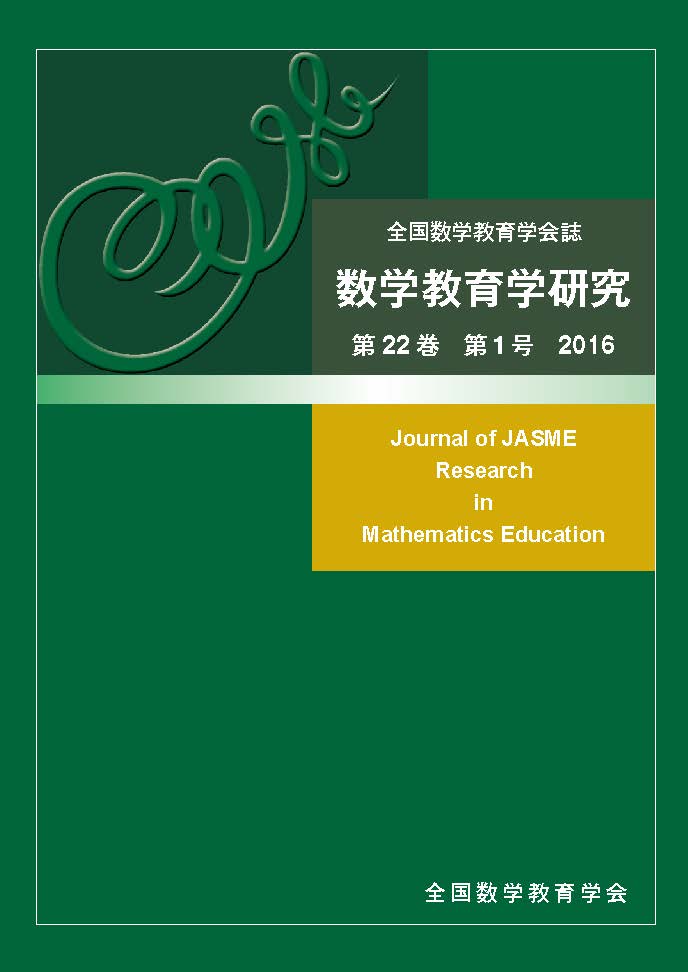22 巻, 1 号
数学教育学研究
選択された号の論文の15件中1~15を表示しています
- |<
- <
- 1
- >
- >|
-
原稿種別: 本文
2016 年 22 巻 1 号 p. 1-7
発行日: 2016/01/30
公開日: 2019/01/17
PDF形式でダウンロード (469K) -
原稿種別: 本文
2016 年 22 巻 1 号 p. 9-21
発行日: 2016/01/30
公開日: 2019/01/17
PDF形式でダウンロード (779K) -
原稿種別: 本文
2016 年 22 巻 1 号 p. 23-39
発行日: 2016/01/30
公開日: 2019/01/17
PDF形式でダウンロード (852K) -
原稿種別: 本文
2016 年 22 巻 1 号 p. 41-49
発行日: 2016/01/30
公開日: 2019/01/17
PDF形式でダウンロード (433K) -
原稿種別: 本文
2016 年 22 巻 1 号 p. 51-58
発行日: 2016/01/30
公開日: 2019/01/17
PDF形式でダウンロード (496K) -
原稿種別: 本文
2016 年 22 巻 1 号 p. 59-65
発行日: 2016/01/30
公開日: 2019/01/17
PDF形式でダウンロード (478K) -
原稿種別: 本文
2016 年 22 巻 1 号 p. 67-77
発行日: 2016/01/30
公開日: 2019/01/17
PDF形式でダウンロード (932K) -
原稿種別: 本文
2016 年 22 巻 1 号 p. 79-104
発行日: 2016/01/30
公開日: 2019/01/17
PDF形式でダウンロード (657K) -
原稿種別: 本文
2016 年 22 巻 1 号 p. 105-113
発行日: 2016/01/30
公開日: 2019/01/17
PDF形式でダウンロード (678K) -
原稿種別: 本文
2016 年 22 巻 1 号 p. 115-147
発行日: 2016/01/30
公開日: 2019/01/17
PDF形式でダウンロード (2759K) -
原稿種別: 本文
2016 年 22 巻 1 号 p. 149-157
発行日: 2016/01/30
公開日: 2019/01/17
PDF形式でダウンロード (579K) -
原稿種別: 本文
2016 年 22 巻 1 号 p. 159-169
発行日: 2016/01/30
公開日: 2019/01/17
PDF形式でダウンロード (452K) -
原稿種別: 本文
2016 年 22 巻 1 号 p. 171-178
発行日: 2016/01/30
公開日: 2019/01/17
PDF形式でダウンロード (556K) -
原稿種別: 本文
2016 年 22 巻 1 号 p. 179-190
発行日: 2016/01/30
公開日: 2019/01/17
PDF形式でダウンロード (507K) -
原稿種別: 本文
2016 年 22 巻 1 号 p. 191-199
発行日: 2016/01/30
公開日: 2019/01/17
PDF形式でダウンロード (514K)
- |<
- <
- 1
- >
- >|

